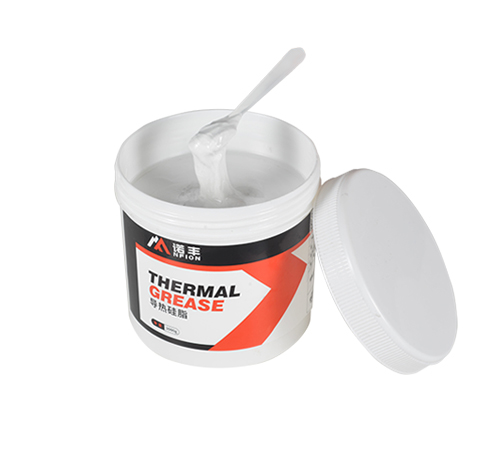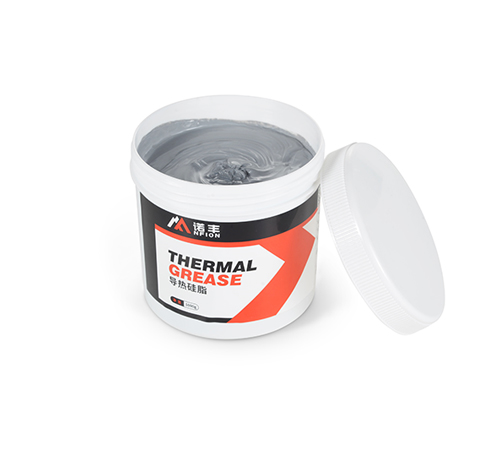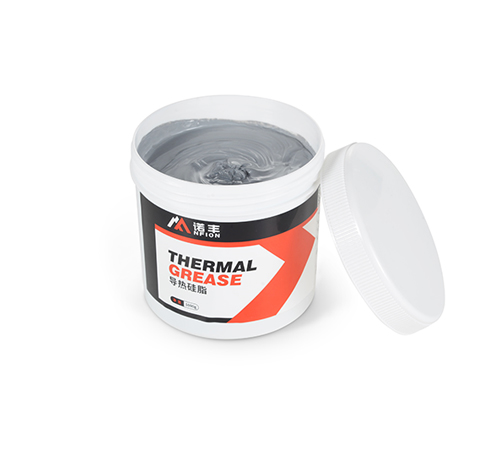The Relationship Between Thermal Conductivity and Viscosity of Thermal Grease
Author:NFION
Date:2024-06-05 15:44:51

Thermal grease, as a crucial thermal interface material, is widely used in electronic components, CPU cooling, and other fields. Its performance directly affects the cooling efficiency and operational stability of devices. Among the various performance indicators of thermal grease, thermal conductivity and viscosity are the most important. This article will delve into the relationship between these two parameters, aiming to provide theoretical support and practical guidance for research and application.
Thermal Conductivity of Thermal Grease
Thermal conductivity is a key indicator that measures the heat conduction capability of a material, usually expressed in watts per meter per kelvin (W/m·K). The higher the thermal conductivity, the stronger the material's ability to conduct heat. The thermal conductivity of thermal grease mainly depends on its composition, especially the type and proportion of fillers. Common fillers include metal particles, ceramic microparticles, and carbon-based materials such as graphene and carbon nanotubes.
Viscosity of Thermal Grease
Viscosity is a measure of a fluid's internal resistance, reflecting the material's flow properties. For thermal grease, viscosity determines its applicability and filling properties during use. Excessively high viscosity makes it difficult to apply the thermal grease evenly, while excessively low viscosity may lead to too much fluidity, making it difficult to stabilize between the heat source and the heat sink.
The Relationship Between Thermal Conductivity and Viscosity
The relationship between thermal conductivity and viscosity is complex and multidimensional. Generally, these two parameters are influenced by the material's composition and microstructure.
1. Type and Concentration of Fillers: Increasing the concentration of thermal fillers typically enhances thermal conductivity but also increases viscosity. For example, adding more metal or ceramic particles can significantly improve thermal performance, but due to the enhanced interaction forces between particles, the material's flow properties decrease, resulting in increased viscosity.
2. Choice of Matrix Material: The viscosity and thermal conductivity of the matrix material also affect the overall performance of the thermal grease. When silicone oil or organic polymers are used as the matrix, their inherent viscosity and thermal properties determine the base flow and thermal capabilities. The more complex the molecular structure of the matrix, the higher its viscosity tends to be, but its thermal conductivity may not increase proportionally.
3. Shape and Distribution of Fillers: The shape (e.g., spherical, flaky, fibrous) and distribution of fillers also impact thermal conductivity and viscosity. Flaky and fibrous fillers typically form better thermal paths, thereby enhancing thermal conductivity, but also increasing the system's viscosity.
4. Role of Additives: Adding specific dispersants and modifiers can adjust the viscosity of thermal grease while affecting thermal conductivity. For instance, using dispersants can reduce filler agglomeration, lowering system viscosity, but may affect the effective contact area of fillers, thereby influencing thermal conductivity.
Balancing and Optimizing in Practice
In practical applications, the design of thermal grease needs to balance thermal conductivity and viscosity. High thermal conductivity and appropriate viscosity are ideal targets, but these are often difficult to achieve simultaneously. Optimization design usually needs to consider specific application scenarios and requirements. For example, in high-performance electronic devices, thermal performance is prioritized, but the viscosity cannot be too high to ensure that the material can be evenly applied and fill small gaps.
Conclusion
Thermal conductivity and viscosity are two crucial yet complex performance indicators of thermal grease, and they mutually constrain and influence each other. By rationally selecting and blending fillers, matrix materials, and additives, an optimal balance between these two can be achieved to meet specific application needs. A deep understanding of these relationships helps improve the overall performance of thermal grease, providing more reliable thermal management solutions for electronic devices and other high-heat-flux-density fields.
 CN >
CN >



